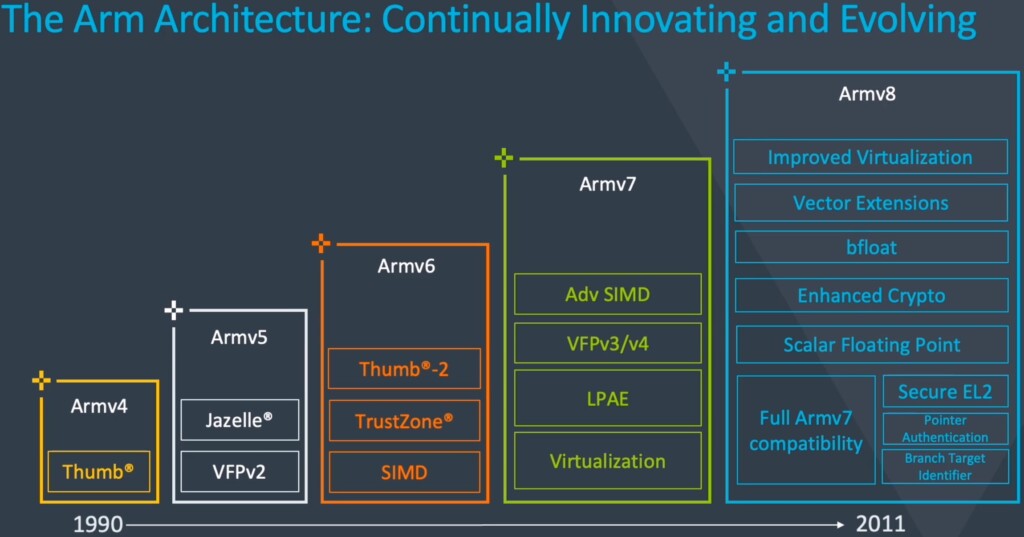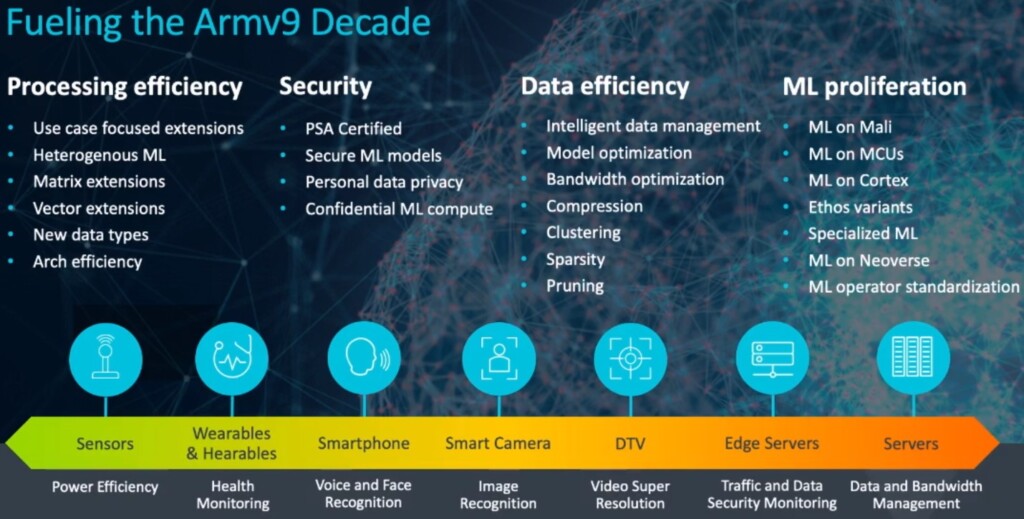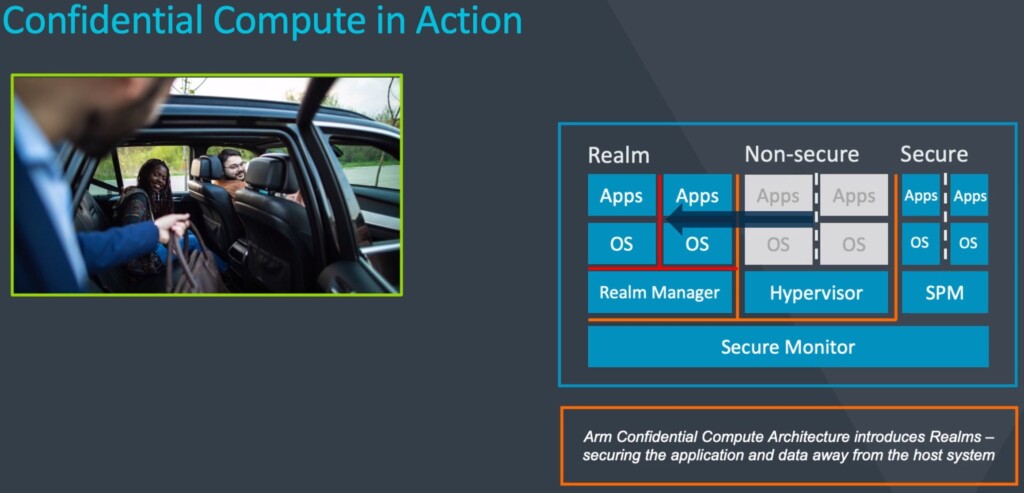
Arm Introduces the ARMv9 Architecture for Upgraded Security and Ubiquitous AI
- Arm has leaped to the next-gen architecture, ARMv9, which will carry us to the next decade.
- The new architecture aims to bring AI and ML everywhere and introduce a more secure code and data handling concept.
- On paper, it looks like the new architecture is a big step forward, but it all depends on what vendors will do with it.
Arm has debuted the ARMv9 architecture, ten years after the previous generation, and the one to carry us forward in the decade to come. According to CEO Simon Segars, who did the revelations, the ninth major version of the ARM architecture is going to revolutionize the deployment of AI-powered solutions, bringing them to over 300 billion chips sitting on our desks, resting in our pockets, watching us from the corner, and carrying the load of our work.
To achieve that, Arm partnered with Fujitsu to introduce the new Scalable Vector Extension (SVE) technology into the ARMv9, making enhanced machine learning possible everywhere while also adding digital signal processing capabilities across a wide range of applications. Arm mentions 5G systems bring aboard virtual and augmented reality and ML workloads running locally on the CPUs, aiding image processing and smart home environments.
In terms of security, leaps are made here by introducing the Arm Confidential Compute Architecture (CCA), which promises to effectively shield portions of code and data from unauthorized access or modification, even if this is attempted via privileged software. CCA is bringing the new concept of dynamically created “Realms,” which are isolated spaces created to be used by specific applications, keeping both the data and the code protected for anything that lies outside the realm.
We have had a chat with Niels Hofmans, a security researcher who likes to explore Apple’s security chips and their superior ARM implementation, so here’s what he told us:
In terms of performance, Arm promises a performance increase of more than 30% over the next two generations of mobile and infrastructure CPUs, but this is not the end of the story. Arm promises greater acceleration through “Total Compute,” pushing aggressively for frequency, bandwidth, and cache size increase, combined with a dramatic reduction in memory latency.
Of course, this is going to unfold along the way, but Arm believes that they have set the solid technical ground for all of this to take place at impressive rates.









